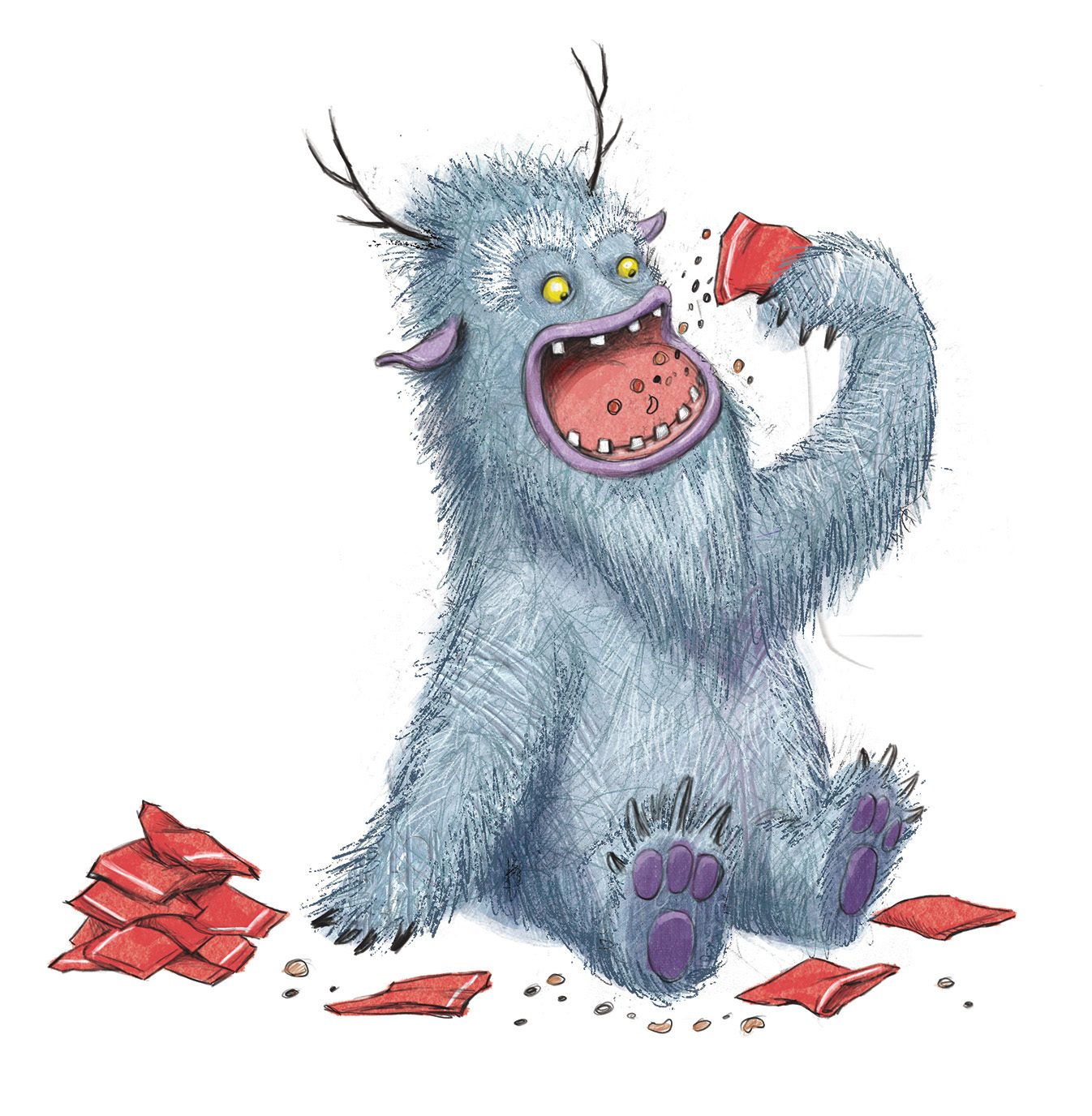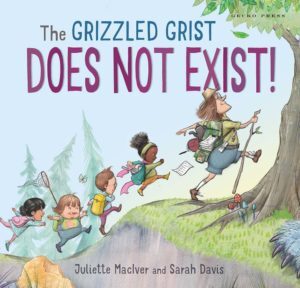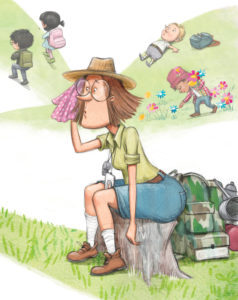 Juliette MacIver is a picture-book writer and mother of four, who lives in Wellington, New Zealand. Juliette majored in Linguistics at Victoria University, Wellington, and has a diploma in teaching English. Her popular books are regularly shortlisted for awards.
Juliette MacIver is a picture-book writer and mother of four, who lives in Wellington, New Zealand. Juliette majored in Linguistics at Victoria University, Wellington, and has a diploma in teaching English. Her popular books are regularly shortlisted for awards.
What is the origin of the Grizzled Grist story?
A good friend of mine asked his nine-year-old son, Jonny, what he would like to be a master of—the best in the world! If he could choose anything, what would it be? And his son replied, “Hiding.” I thought this most wonderfully captured a child’s view of what’s important, what skills really matter. At the time Gecko Press had suggested I write a sequel to That’s Not a Hippopotamus, and I decided to try and weave this idea of Jonny’s into the sequel as a central theme.
So Liam became the kid with masterful hiding skills, skills that are undervalued and scorned by everyone else in the story. In the first book, Liam’s quiet, observant nature comes to the fore when everyone is rambunctiously charging around looking (hopelessly) for the hippo, and Liam is the only one actually spotting him. In the sequel, I wanted Liam to save the day once more, with the same structure and refrain as the first book—“Excuse me, Miss…”—and the teacher and others dismissing him. This time there would be a grave danger threatening everyone, but only Liam the Observant would recognize the signs. The idea of hiding naturally dovetailed with this plotline. Hiding also needed to be the specific means by which Liam would eventually save them all, so they would all recognize him at last for his genius, just as they did in the hippohunting story.
 Were you a quiet, observant child like Liam?
Were you a quiet, observant child like Liam?
Oh no, I was not! Haha. I wasn’t rambunctious or loud, but I wasn’t quiet and observant either. More away-with-the-fairies, I think. I don’t have any personal experience of what it’s like to be the quiet, observant child but I do have two quiet children myself, and I sometimes feel their comments and insights just don’t get heard.
How was it revisiting the same characters from That’s Not a Hippopotamus?
I wanted to stay true to all the various personalities that come through in the first book. Anyone without a speaking part in That’s Not a Hippopotamus had been further developed by Sarah Davis, the illustrator, who evolved all the characters to a new level. I wanted to feature a few of the children in the sequel, with a good representation of girls and boys and different ethnicities, but I also had to make sure their names fitted the scan in the rhyme! And their personalities had to be consistent with the first book, too. So all that added an interesting challenge for book two.
What is important to you when you write rhyme—do the rhymes come easily?
Several things are of high and equal importance:
- The scan must work beautifully and easily, with no ambiguity (or as little as possible) in the way the words should naturally be stressed, so that all readers read it the same way.
- The rhymes must be perfect—no “s” on the end for one word and not on its rhyme; no sound approximations. There are a few exceptions, like nasalizations that the ear just doesn’t pick up (“mine” and “lime”) but otherwise as perfect as possible. This gets tricky when you are writing for multiple dialects though: New Zealand, Australian, British and American English don’t all pronounce words the same, nor is the stress pattern always the same, so sometimes the American editors have come back asking me to rewrite something, and I realize the rhymes in questions fail in all but a Kiwi accent! So then I rewrite them, as best I can…
- The phrasing needs to be as natural as possible; nothing forced. This is very important as it’s easy to start using weird words and peculiar syntax when you’re trying to make something rhyme.
I guess the rhyming does come easily to me, but perfecting it to my satisfaction requires a lot of devoted effort. (Though it doesn’t feel like effort—I love doing it so much that hours can pass and I can get cold and hungry without noticing!)
What is it like collaborating with Sarah Davis?
Sarah’s useless—she just rides on my coattails. Without me she’d be an impoverished paint-dribbler in some no-hope Sydney badlands. Though she herself might say otherwise.
Sarah is not actually a human. She is a sorceress. She can make things happen with paint—astounding and delightful things—that no mortal can do. She brings subplots, wit, humour, movement and detail to the story that I don’t even discover sometimes till years later. It’s outrageous. How is it possible? I am not worthy to lick the turps off her discarded paintbrushes.
Most of the time I visualize what’s happening when I write, but sometimes my visuals move, like a film. Sarah has a limited number of static pages and angles through which to convey the essential action. So sometimes I will have to rewrite things because of this, or Sarah will suggest something to enhance the visual aspect, like “could you put a range of different sized animals on the ship” that will work better visually than an overcrowding of llamas, bulls and camels, say. So yes, we have a great time negotiating to devise the best story-telling angle that works for both story and pictures.
Is the Grizzled Grist all bad?
YES HE IS! No, he isn’t, really. But I did most emphatically want him to be all bad, originally. I envisioned him along the lines of the witch in Hansel and Gretel—a purely evil creature bent on eating children, who gets hoisted by her own petard when she is shoved into her own oven. It seemed very necessary to me that the Grist should pose a serious threat, so all of Liam’s warnings are justified at the end, and he saves them from an actual danger. I had the Grist sharpening knives as he danced around the kids, singing menacingly about children pie.
Sarah wasn’t so sure about knives and children pie (though Gecko Press were all good with it!). In the end we decided to soften him a bit, not leave him in his own boiling soup pot, but rather let him crawl dejectedly out of it, with a kind gesture from Liam at the end, depicted visually. Liam suggests he eats the scattered packets of Trail Mix instead of children pie, which is all very sweet and probably a nicer tone for very wee children, in the end.
The Grizzled Grist Does Not Exist | Available from all good bookstores
An exuberant rhyming picture book about a school trip to the hills, where no one sees the danger—apart from quiet Liam, who pays attention and saves the day with his particular skill of hiding.



